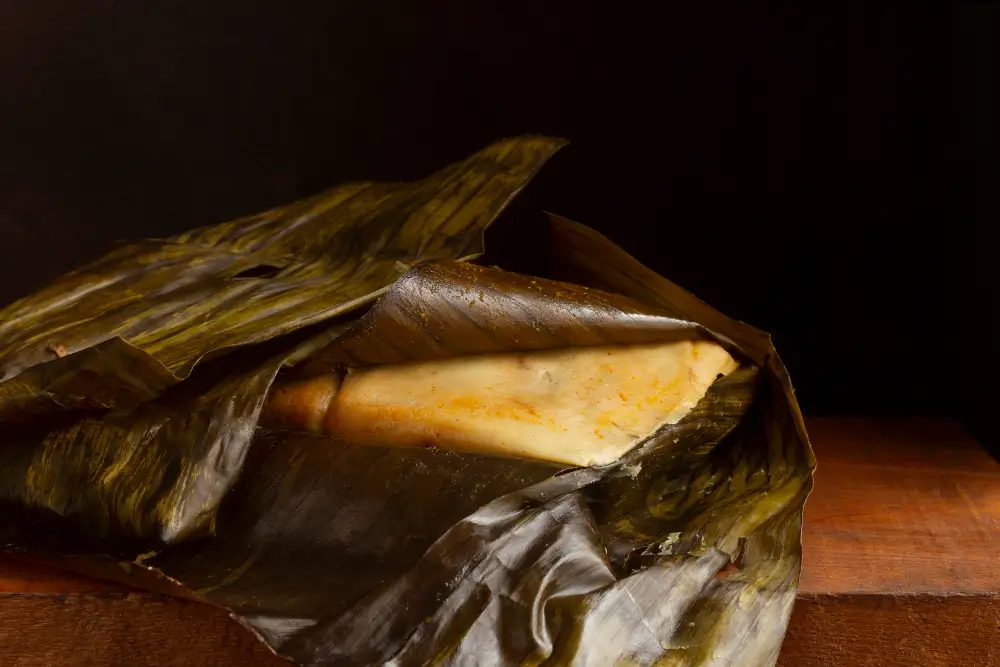Colombian Tamal: The Traditional Breakfast You Need to Try
It might look like just another dish wrapped in banana leaves—but what if this traditional breakfast could change how you think about mornings forever? Hidden in the heart of Colombian culture, there’s a centuries-old recipe that blends history, flavor, and comfort in one unforgettable bite. What exactly makes the Colombian Tamal the traditional breakfast you absolutely need to try? The answer may surprise you.
TL;DR:
The Colombian tamal is a beloved traditional breakfast that blends deep cultural roots, diverse regional variations, and rich flavors. Originating from pre-Hispanic traditions and evolving through Spanish and African influences, it symbolizes national identity. Made with maize dough, meats, vegetables, and spices, it varies by region and is often prepared and enjoyed during family gatherings, making it both a culinary and cultural staple in Colombian households.
Taste Colombia’s best with help from colombian food in Queens

What Makes Colombian Tamal a Traditional Breakfast Favorite?
The Colombian tamal is much more than a typical morning dish. It’s a reflection of cultural identity and flavor that has been passed down through generations. Its combination of ingredients and careful preparation make it a filling, comforting breakfast perfect for sharing.
This dish is especially meaningful during family celebrations and holidays like Christmas, when making tamales becomes a shared tradition. While the process takes time and effort, it brings families together and connects them with Colombia’s culinary roots.
Its rich flavor and versatility make the tamal a favorite that goes beyond daily meals and stands as one of Colombia’s most beloved breakfast traditions.
The Rich History Behind Colombian Tamal
The Colombian tamal is celebrated for both its taste and the history woven into each preparation. With indigenous roots and a long history of transformation, this traditional dish captures the cultural blending that defines Colombian cuisine.
An Ancient Dish with a Story: The tamal is a culinary symbol shaped over centuries. It dates back to pre-Hispanic times, when Indigenous communities used corn as a staple to create an early version of tamal, wrapped in banana or bijao leaves.
A Blend of Cultures: When the Spanish arrived, they introduced pork, chicken, and new spices to the dish. African influence later added depth to the seasoning and refined the use of banana leaves for wrapping.
A National Symbol: Today, the Colombian tamal is considered a symbol of national identity. It’s especially valued during festive times like Christmas, when families and communities come together to prepare it. The tamal remains a representation of Colombia’s culinary and cultural richness.
More than a traditional food, the tamal stands as a living piece of cultural heritage. Its evolution reflects the merging of cultures, and its presence at celebrations keeps tradition alive in the hearts of Colombians.
Regional Variations: How Tamal Changes Across Colombia
While tamales share a common base, the filling and preparation vary depending on the region. These variations reflect local ingredients, customs, and cultural heritage. Here are some of the most notable versions:
Tamales by Region
- Tolima: One of the most well-known varieties. Round in shape, filled with pork, beef, chicken, chickpeas, and spices. Often eaten with hot chocolate for breakfast.
- Santander: Rectangular with generous amounts of pork, chicken, chickpeas, capers, and raisins, giving it a slight sweetness.
- Bogotá: Filled with pork, chicken, rice, and vegetables. Served with hogao, a tomato and onion sauce.
- Antioquia: Includes marinated pork, peas, potatoes, and carrots. A simpler but flavorful version.
- Pacific Region: Known for tamal de piangua, made with plantain dough and piangua, a local mangrove mollusk.
- Cundinamarca: Features pumpkin in the dough, adding color and a soft texture.
- Nariño: Dough made from cooked and ground white rice mixed with grated cheese, beaten eggs, baking powder, butter, salt, and pepper. Filled with chicken or pork.
- Cauca: Home to the tamal de pipián, made with native yellow potatoes.
- Caribbean Coast: Known as “pastel de masa,” “pastel de maíz,” or “pastel de Navidad,” often influenced by Lebanese cuisine and includes ingredients like eggplant.
- Amazon Region: Uses local ingredients and traditional methods unique to each Indigenous community, reflecting the natural and cultural landscape of the region.
Colombia’s tamal diversity mirrors its cultural and geographical richness. Each region adds its own flavor to this culinary tradition, turning the tamal into both a typical breakfast and a symbol of local identity. Tasting these different styles is like traveling the country through food.
Ingredients That Make Colombian Tamal So Unique
Colombian tamales are known for their complex flavors. Although there’s no single standard recipe, some ingredients are commonly used. Combined with traditional techniques, they create a distinct culinary experience.
| Category | Common Ingredients |
| Dough | Precooked cornmeal, sometimes mixed with cooked rice |
| Meats | Pork, chicken, beef; often includes ribs, bacon, pork leg |
| Vegetables | Potatoes, carrots, peas |
| Seasoned Base | Onion, tomato, garlic, cumin, black pepper |
| Seasonings | Annatto, salt, pepper, other spices to taste |
| Wrapping | Banana leaves (add aroma and retain moisture) |
| Optional Add-ins | Rice, hard-boiled eggs, chickpeas |
What makes the Colombian tamal so special is the harmony of these ingredients. Each element adds flavor, texture, and aroma. This blend, personalized in each region and home, makes the tamal a true icon of traditional Colombian cuisine.
How Tamal Brings Families Together for Breakfast
The Colombian tamal creates the perfect opportunity for families to gather around the table. Its traditional flavor, detailed preparation, and cultural significance make it a special choice for weekend breakfasts and holiday meals.
A Shared Tradition
- Family custom: In many homes, especially during birthdays, religious holidays, or Sunday breakfasts, tamales are a meaningful part of the meal. Their presence brings back memories and a sense of connection.
- Cooking together: Making tamales is rarely a solo task. It takes time and attention, and it’s often a group activity. Preparing them together strengthens bonds and helps preserve recipes and family traditions.
Why Tamal Brings Families Together
- It’s linked to weekends and special celebrations.
- Preparing it encourages teamwork in the kitchen.
- Eating tamales together strengthens cultural identity.
- It creates moments of tradition, conversation, and connection.
- It brings back shared memories and feelings of home.
More than just a breakfast dish, the Colombian tamal is a tradition that connects generations. Cooking and enjoying tamales together builds emotional ties and turns every gathering into a celebration of heritage and shared culture.
Key Takeaways
- The Colombian tamal is more than a dish—it’s a reflection of the country’s cultural identity, combining flavor, history, and shared tradition, especially during breakfasts and festive occasions.
- Originating in pre-Hispanic times with indigenous roots, the tamal evolved through the incorporation of Spanish and African ingredients and techniques, becoming a national symbol especially during celebrations like Christmas.
- Each Colombian region offers its own version of tamal, adapting local ingredients and customs. Examples include the tamal tolimense (meat and garbanzo mix), santandereano (includes capers and raisins), tamal de piangua from the Pacific, and the pastel de masa from the Caribbean coast.
- While variations exist, common ingredients include precooked corn masa, pork, chicken, vegetables (like potato, carrot, peas), hard-boiled eggs, and a seasoned base (onion, tomato, garlic, cumin, pepper), all wrapped in banana leaves to retain moisture and aroma.
- Tamal-making is often a collective family activity, especially on weekends and holidays. Preparing and sharing tamales strengthens bonds, preserves culinary traditions, and creates lasting memories.
- The Colombian tamal is a shared experience that unites generations. Its preparation and enjoyment are acts of cultural preservation, transforming breakfast into a celebration of heritage.
Our location

Carlos Moreno
A month ago
My girl and I came to Raices on a Thursday night and I had such a good time. Antonia was our bartender and she was amazing! Great drinks and food! My girlfriend had a Colombian punch and I had whisky. We love this place and the service! 100% recommended.
Read more
Attila Mocanu
A month ago
Great place for authentic Colombian food. Service is fast and portions are big. Lots of screens to watch sports.
Read more
Ivonne Demera
A month ago
Excellent service!! I’m so pleased with the food and attentive service from Luis and Julian. I’ll definitely recommend and will keep coming back.
Read more
